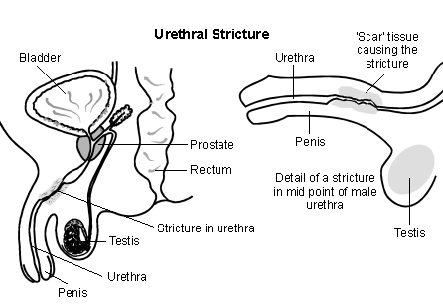Urethra Stricture Surgery
Introduction
Narrowing of a part of urethra is called urethral stricture. It leads to decreased flow of urine. It can lead to further complications. Stricture can vary from partial narrowing to complete blockade of the urethra. It is common in men and rarer in women. This could be due to the longer urethra in men compared to women. There are multiple reasons for causation of urethral stricture. Scarring of urethral tissue following injury may be responsible for stricture. Infection or cancerous conditions may be other reasons. Common presenting features are decreased flow of urine, dribbling of urine, urinary infections, mild pain, increased urge to void urine and feeling of incomplete evacuation. Complications include recurrent and severe urinary tract infections, bladder infections and kidney infections, severe and sudden retention of urine leading to an emergency condition.
An Iranian expert has been selected due to the country's progress in urology and for having preeminent experts

Surgical Procedure
Flow rate of urine is assessed to establish the diagnosis of urethral stricture. X-ray and USG are also advised to determine the site of the blockage. A special tube called cystoscope may be passed through urethra to visualize the stricture. It is a fibre optic tube with a camera on its tip. The tube is passed into the urethra and the inside walls are visualized on the screen. This helps detect the site of the stricture.
Periodical follow up is essential for early detection of recurrence.
The objectives of treatment are to improve flow rate of urine and avoid possible complications. The patient is evaluated by an urologist. The treatment option depends on the extent of the stricture and general health of the patients. In many patients dilatation of the stricture is an option. At first anaesthetic gel is applied over the instrument. A thin flexible surgical rod is lubricated with the anesthetic gel and inserted into the urethra. Rods with gradually increasing diameter are used one after the other. This is done to stretch the urethra gently and prevent tearing of the urethra. Care should be taken to avoid trauma and undue stretching. The procedure may need to be repeated in future to prevent further narrowing.
Another procedure called urethrotomy is also performed in some patients. A thin cystoscope or a hollow tube is passed through urethra. A thin knife is passed along with it to cut open the stricture. As a result urethra is widened. This is a microscopic surgery done under skilful hands and under the guidance of a camera. There are chances of recurrence. In these cases the procedure may be repeated.
If both the above procedures fail, then extensive surgery is planned. This involves opening up of the urethra surgically using an incision over the site of obstruction. The affected part is then reconstructed. After surgery the incision is closed and the surgical site is dressed.
All surgical attempts to dilate the urethra require adequate post-operative care to avoid any complications and recurrence. Antibiotics are prescribed to avoid urinary infections. Pain relievers are prescribed for the pain following the operation. A urinary catheter may be placed initially for maintaining the dilation. Periodical follow up is essential for early detection of recurrence.